A Wealth of Historic Churches in New Orleans Have Been Beautifully Repurposed
Where Mardi Gras beads drape from magnolia trees and the sound of church bells cuts through the Southern heat, New Orleans has always been a city consumed with both pleasure and worship. With architecture inspired by the French, Spanish, and Creole, hundreds of churches dot this magnificent city rich with culture and history. Following Hurricane Katrina, many of the city’s grand historic churches on generous plots of land became available: The archdiocese surrendered control and the hallowed grounds went on the market, beckoning a whole crop of people (reportedly including John Malkovich, Solange Knowles, and Jay-Z and Beyoncé) dedicated to repurposing these ethereal spaces into other forms of high-spirited use. “They were beautiful structures falling apart,” says local Chris Jones, who purchased three churches in New Orleans, including Felicity Church. “The churches didn’t have the money. Now everyone can enter these historic churches; they’re magnificent structures regardless of religion.”
The Marigny Opera House
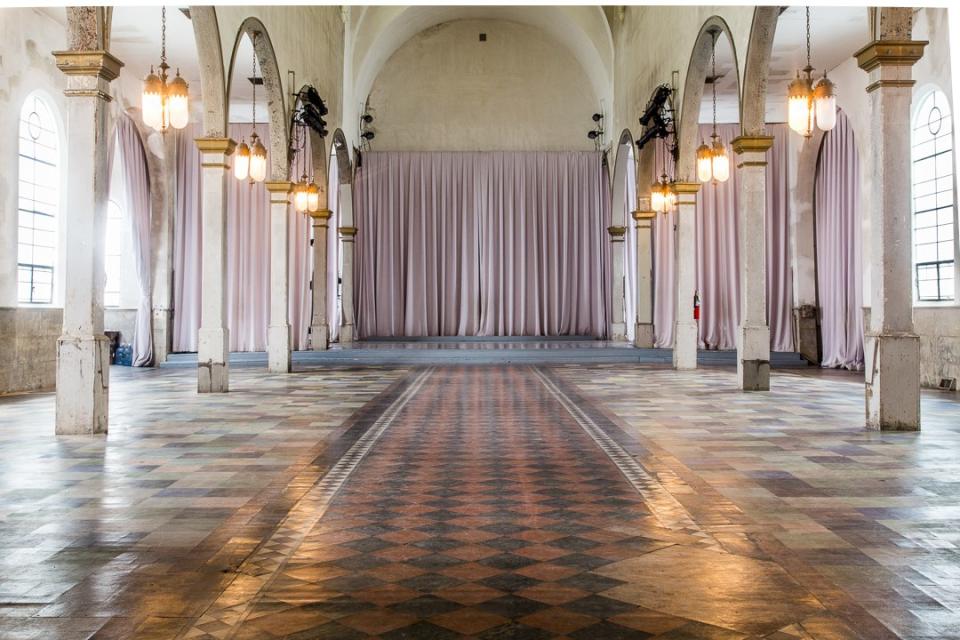
One of New Orleans’s first large churches to be put on the market post-Katrina, this faded white Romanesque church from 1853 presides over the Marigny neighborhood with gravitas. The Marigny Opera House, as grand as it is inimitable, maintains its original stained glass windows, muted frescoes, and multicolored pastel floors; the church’s old arches and columns are reminiscent of Moorish architecture. Throughout the day, the light shining through the stained glass changes the hues inside the church. Today, the space serves as a nonprofit performing arts theater, including ballet, opera, and concerts. Depeche Mode shot the music video for “Heaven” in 2013 at this divine space, and Solange Knowles got married here.
Felicity Church
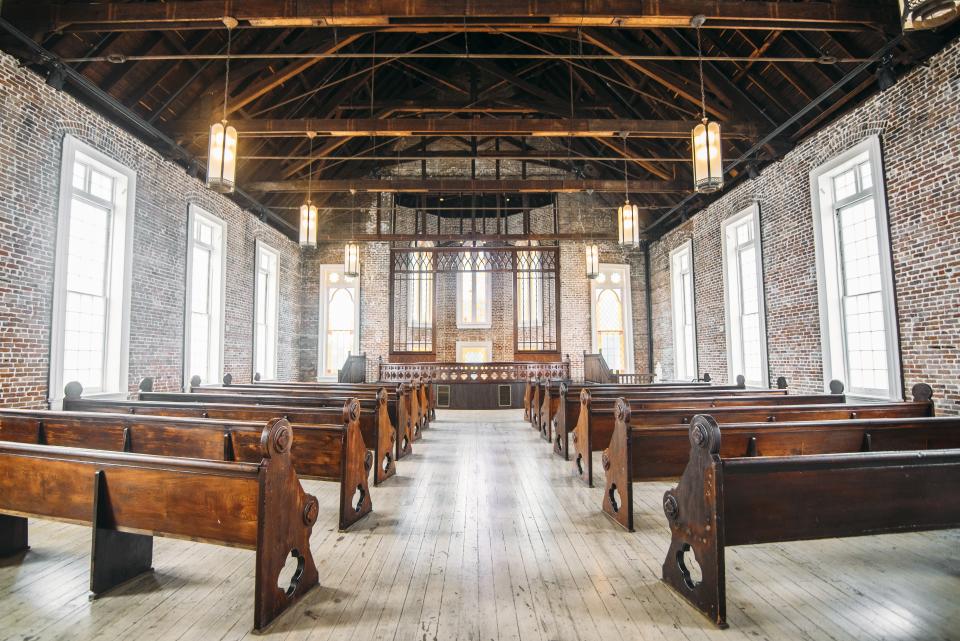
This Gothic Revival two-story church was the largest Methodist church in New Orleans when it was built in the 1850s, but a fire, the Great Hurricane of 1915, and Hurricane Katrina damaged the church’s structure over time. When Chris Jones and Jessica Walker purchased the building in 2011, the church had been vacant for six years following Katrina. The couple moved into the parsonage house next door and restored the integrity of the church, highlighting the building’s distinctive features by using existing wood as much as possible and salvaging the original brick, doors, and light fixtures. In 2013, Jones and Walker got married in Felicity Church. Today, it’s open as a fully nondenominational sanctuary, where the space is used for weddings, corporate events, and fund-raisers. The project won multiple awards, including the Louisiana Landmarks Society 2017 Award for Excellence in Historic Preservation.
Vessel
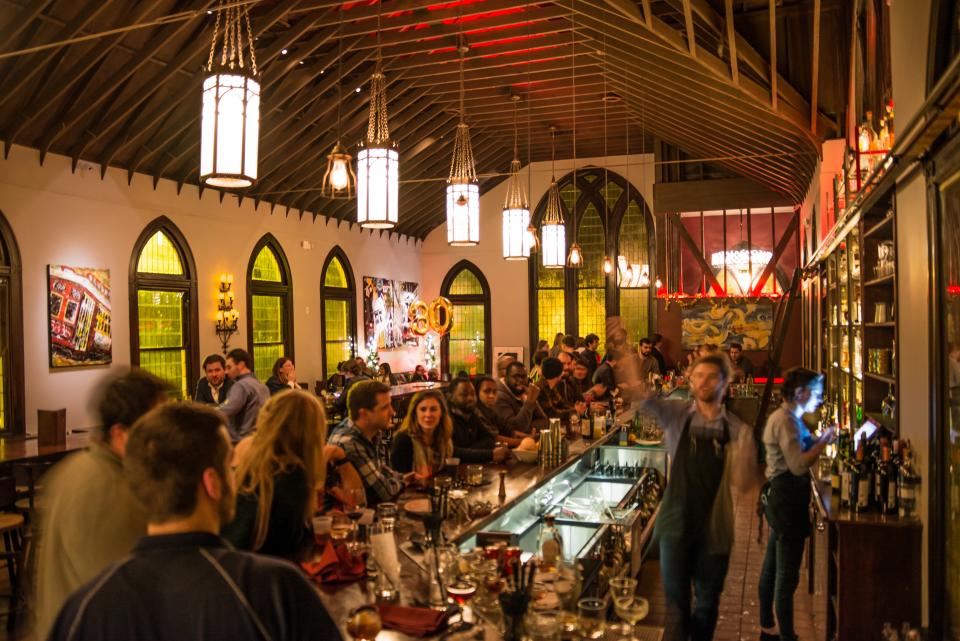
When the Los Angeles–based team Alec Wilder and Eddie Dyer purchased this church turned restaurant in Mid-City, they bought it sight unseen. “In L.A., I had a premonition about a church in New Orleans,” says Wilder. “I found a realtor and he said he had a church. He hadn’t even listed it yet. I said, I’ll buy it.” It's featured on the Travel Network’s The Dead Files as one of the most haunted churches in America, but Wilder says it wouldn’t be a church in New Orleans without some ghosts. The restaurant serves local fare, and the bar is made of glass shelves in front of the church’s giant stained glass window. The ceiling looks like the hull of a ship, earning the restaurant its apt name. “We kept the integrity of the church and turned it into a bar,” says Dyer. “This was the biggest challenge, but we overcame it. At night the bottles and the bar glow a deep red. It has a subtle spiritual effect; it’s very New Orleans.”
Perez Architects
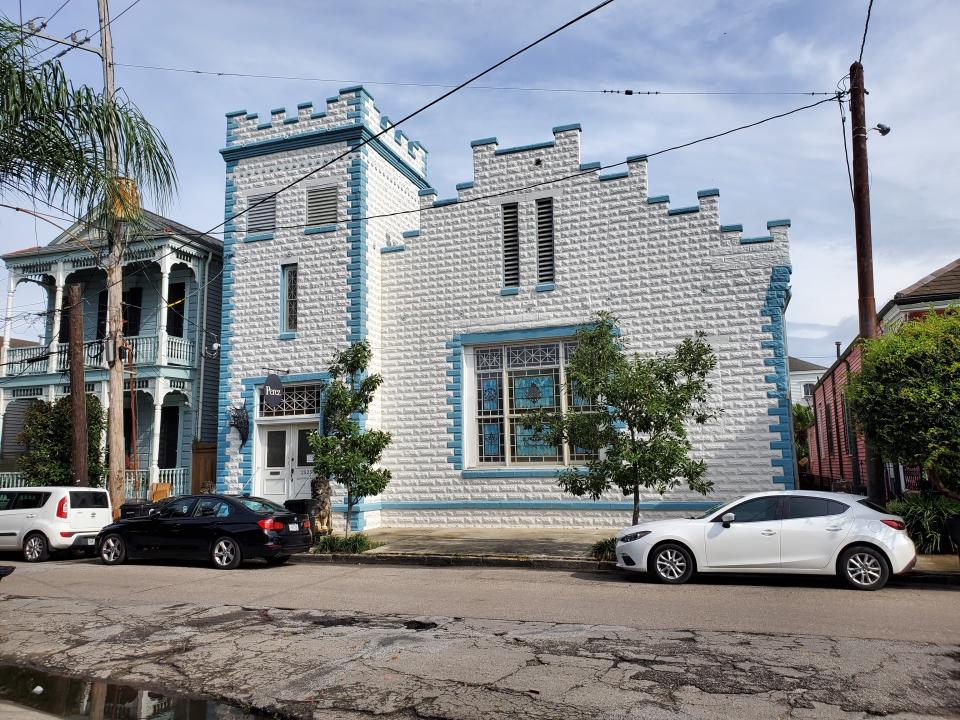
Given the high energy of life in the French Quarter, Perez Architects switched office locations from the Quarter to a new residence where the work environment feels more reserved. Discovering the Methodist Episcopal church built in 1907, Perez Architects opened up shop in the old white and turquoise church in the Marigny. The original architect, M.B. DePass, used a collection of popular styles of the time, including Romanesque, Carpenter Gothic, and Craftsman Revival. Keeping the stained glass windows, high ceilings, and custom detailing, Perez Architects sustained the unique architecture of the building. “As a design firm, it’s important to be surrounded in a space that inspires what you do. Our new church building and the neighborhood do just that,” says Perez Architects interior designer Kris Lowry.
Ogden Museum of Art
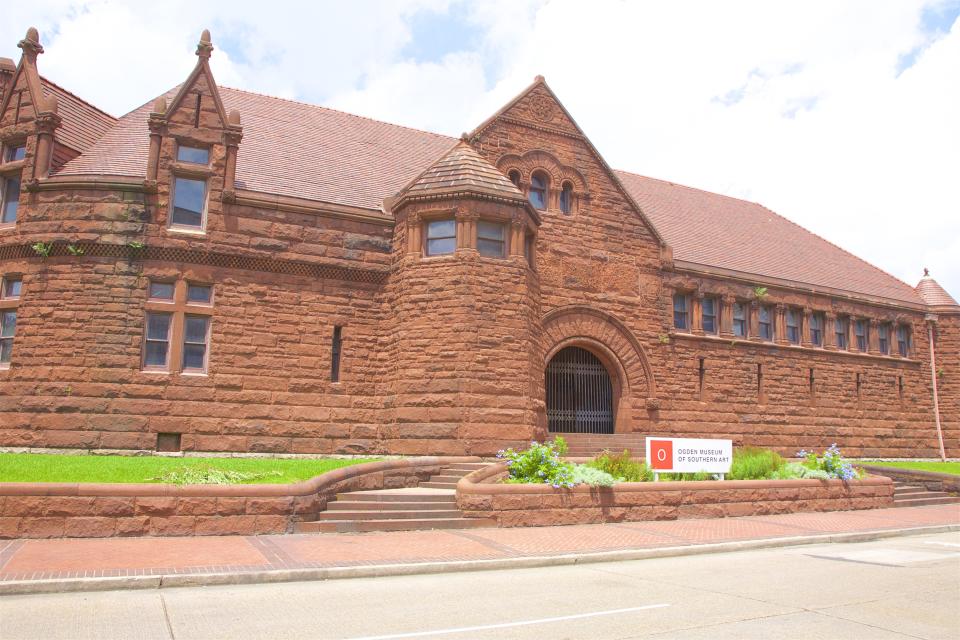
Library designed by Henry Hobson Richardson, now Ogden Museum of Southern Art, New Orleans
Photo by Barry Winiker. Image courtesy of Getty.While the Ogden Museum of Art’s library turned event space was never a church per se, its architect, Henry Hobson Richardson, was inspired by cathedrals—almost every structure Richardson designed is reminiscent of cathedrals, churches, and chapels. Opened Mardi Gras Day in 1889, the “Richardsonian” Romanesque library at the Ogden is today used for museum events, summer camps, educational programs, film screenings, symposiums, lectures, and more. One can still see the influences of the French, Spanish, and Italian throughout.
Church of Yoga
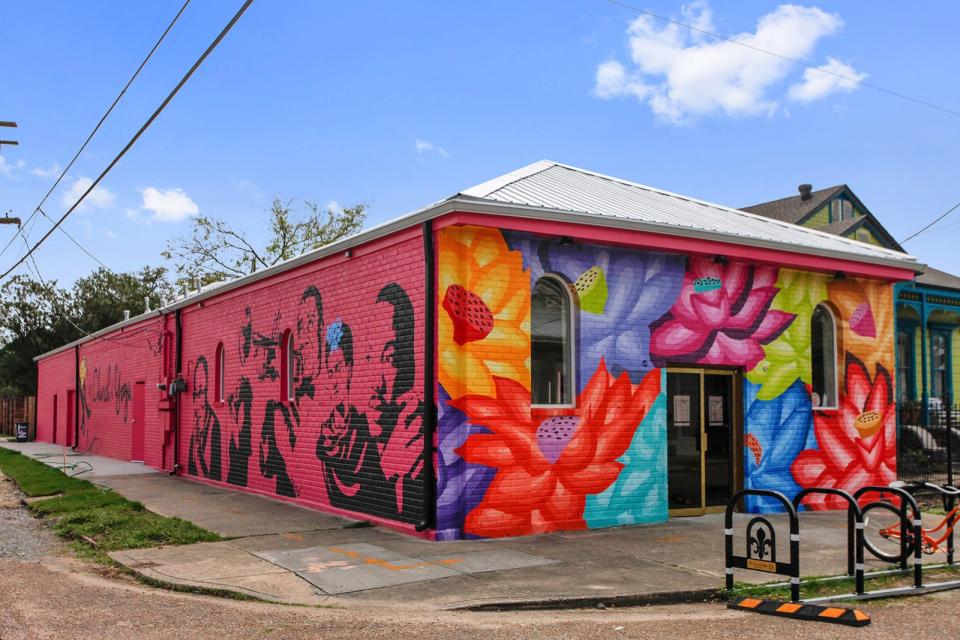
New Yorker and yogi Dana Flynn discovered this Baptist church was for sale in 2015 when she was teaching yoga in the Big Easy. “I was down in New Orleans teaching four years ago and saw the church for sale and dreamt it up,” she says. With Technicolor hues and a vibrant sign left over from its church days, the church is now a generosity-based yoga and community center in the Seventh Ward.
Southern Rep Theatre
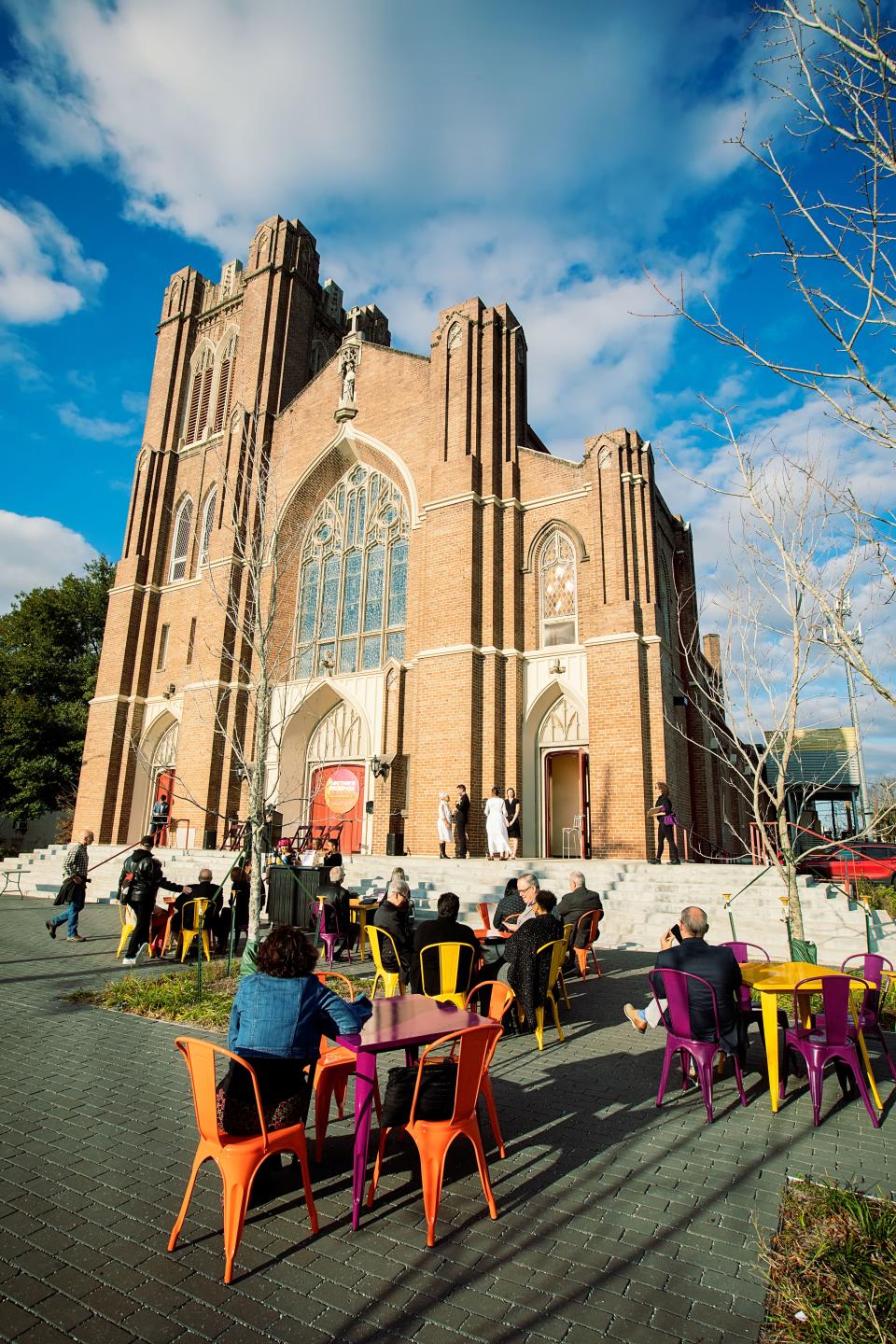
Guarding one of America’s oldest streets, Bayou Road, the 1915-born Southern Rep Theatre is the tallest structure on the block, where many small businesses owned by black females are located. Construction on the Gothic-style church began in 2017, and today the theater hosts a 125-seat audience for six productions per year on its main stage, while the front stage hosts local performances, comedy shows, and concerts. “The most prominent art on display on the restored campus is a triptych that hangs inside the church,” says Jaron Caldwell, director of marketing and P.R. for the theater. “The painting depicts U.S. Captain Andre Cailloux, a beloved community figure and free black man who fought for the Union. The second portrays the Union regiments of free men of color in battle, and the third shows Father Maistre, a white abolitionist pastor who led St. Rose de Lima and performed funeral rights for Capt. Cailloux against the explicit commands of the church.” Importantly, the redesigned building still conforms to the Secretary of the Interior's Standards, so the interior of the church can easily be reverted to its original configuration.
The Home of Robin and Scott Borne
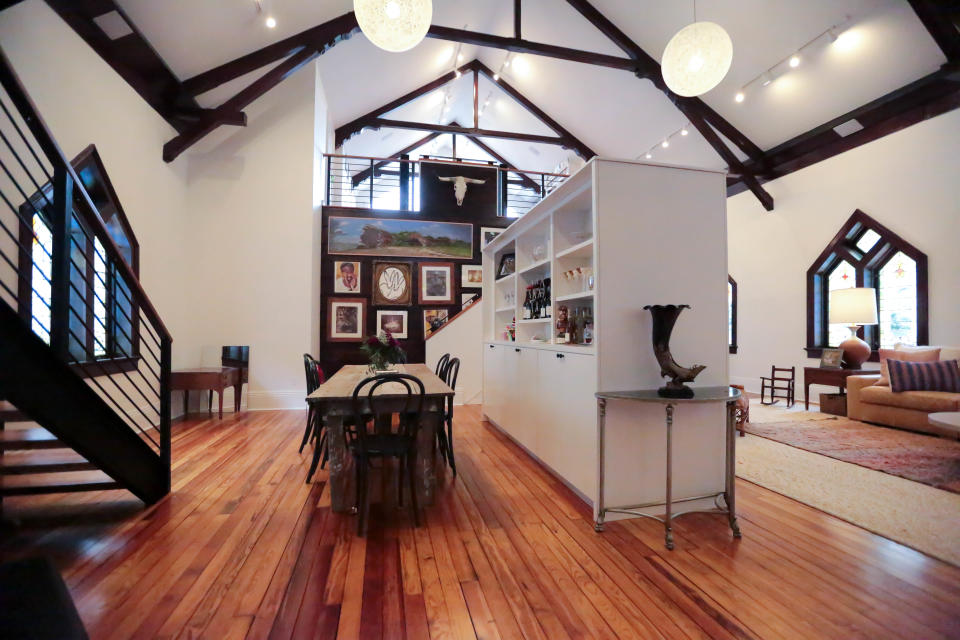
In 2015, local homeowners Robin and Scott Borne purchased the Mount Calvary Church with the intent to repurpose it into a cozy living space. “I’m inspired by past meets future, upcycling, and layers of texture and color,” says Robin. “I was overwhelmed by the scale of the church, having never created a space with such lofty ceilings.” To help bring their vision to life, the couple hired interior designers Logan Killen Interiors and architecture firm Metro Studio, who worked to transform the structure into a living space that still retains the original look of the church on the outside, though they changed it from the original white and yellow to charcoal and gray. “We felt the darker gray, which everyone interprets differently, grounded the space,” says Robin of the 1912 home in the Faubourg St. John neighborhood. “Inside, the altar is now our bar. The pitch of the ceiling and the windows are churchy, but the rest is open and modern.”
Originally Appeared on Architectural Digest

